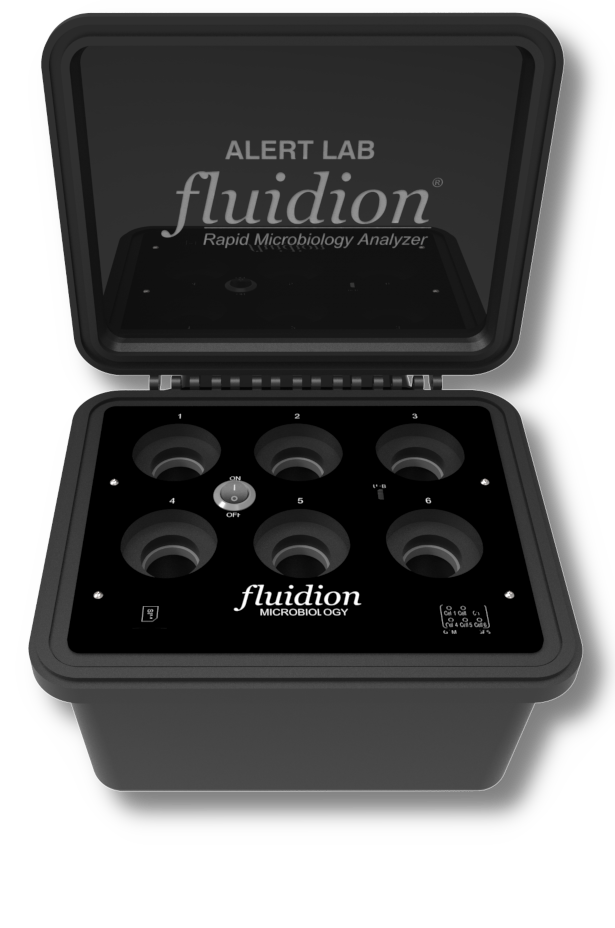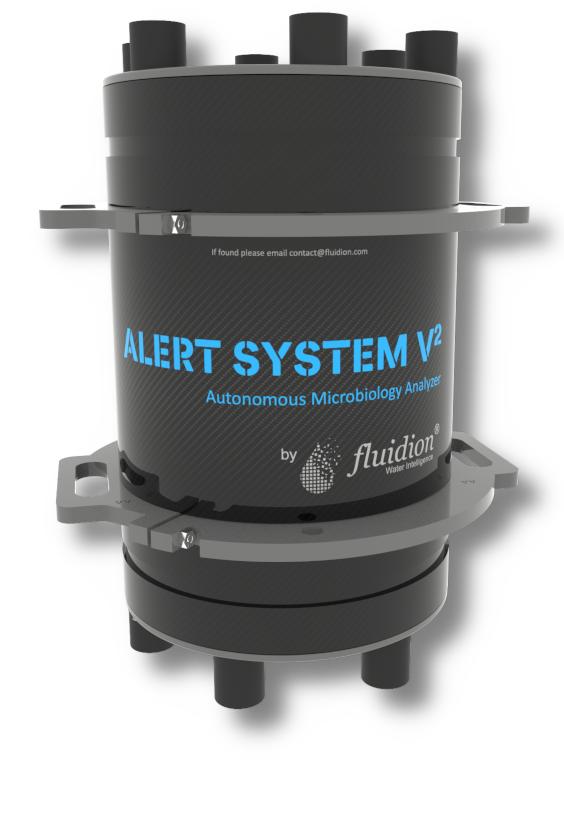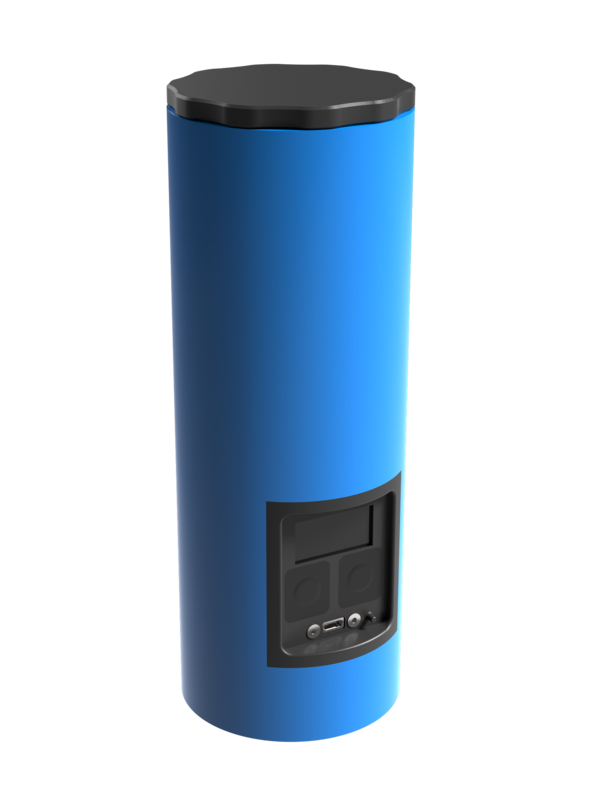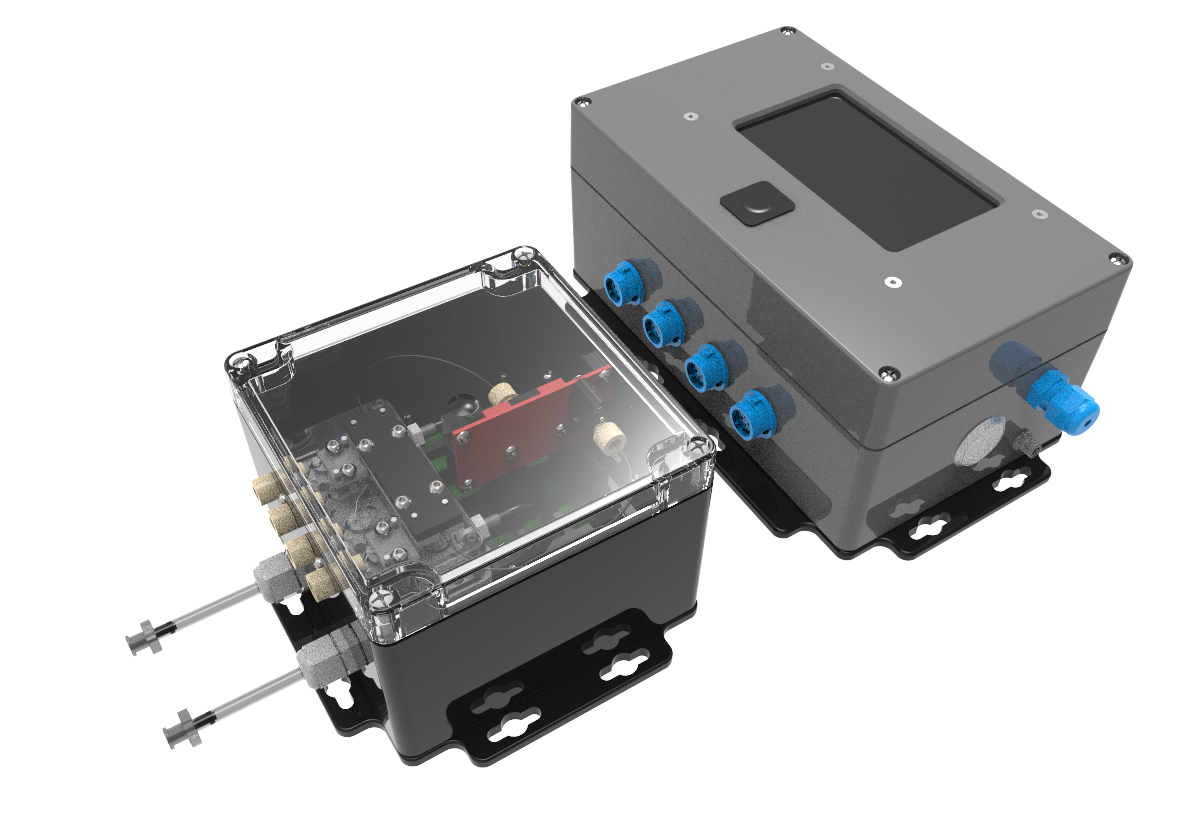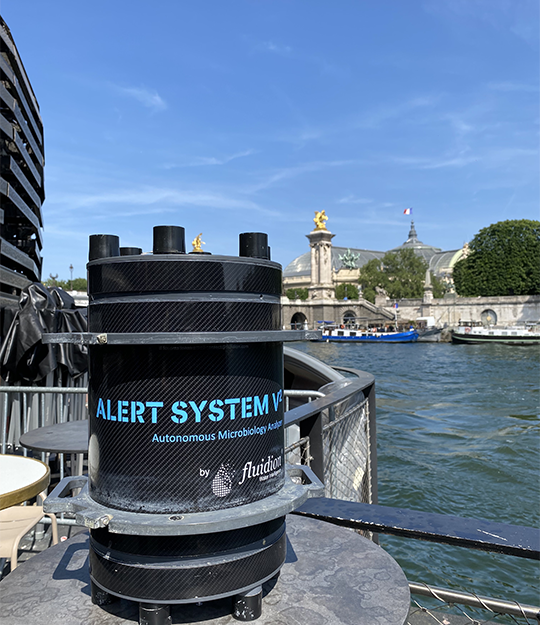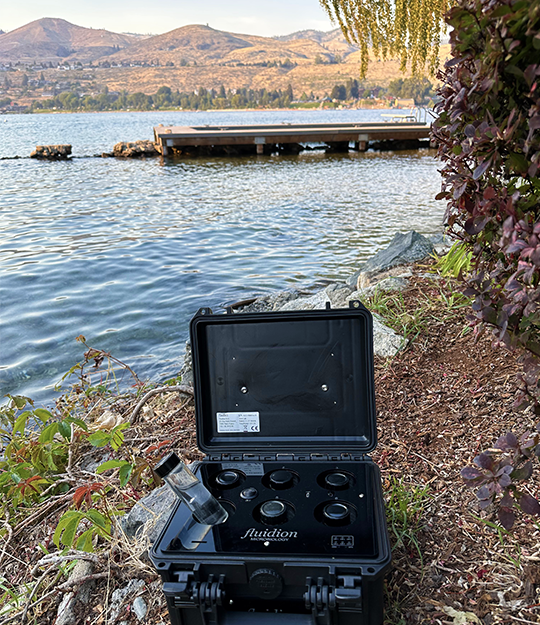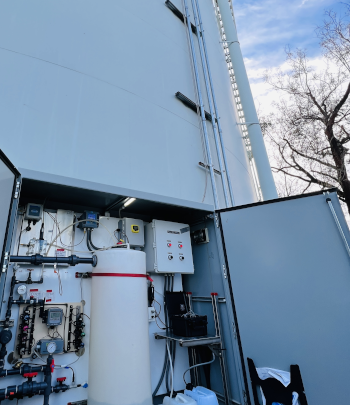
Drinking Water
Source Protection - Network Monitoring - Public Health
Access to drinking water, recognized as a fundamental human right by the United Nations' Sustainable Development Goals, involves a complex journey from sources like groundwater, reservoirs, or recycling facilities to our taps. This process includes collection, rigorous treatment, disinfection, storage, and distribution, all while navigating the challenges of stringent regulations, the technical intricacies of water treatment and the realities of infrastructure aging and degradation. Fluidion's automated monitoring technologies are becoming invaluable in this landscape, offering water utilities worldwide real-time water quality analysis for several key parameters. This not only ensures adherence to safety standards but also facilitates prompt and informed decision-making, ensuring that safe drinking water remains consistently accessible to all.
Catchment Water
Monitoring raw source water is critical for observing and mitigating microbiological and chemical contaminants. It helps identify the influence of environmental conditions on raw water quality, adjust treatment parameters to ensure adequate purification and maximum safety of the water supply, and avoid sources that may be subjected to short-term pollution. The use of Fluidion autonomous, fully automated analyzers is revolutionizing this process, delivering real-time, accurate data on water quality parameters. They provide a solid basis for decision-making and ensure optimal treatment processes to protect public health.
Drinking Water Production
Raw water undergoes several treatment stages, most commonly pretreatment (coarse filtration, sedimentation, coagulation, and flocculation), filtration of small particles (<0.1 micron), disinfection, and chemical corrections. It's imperative to measure the effectiveness of each step to ensure full compliance and to detect potential failures early on, allowing for prompt adjustment of treatment parameters. The use of autonomous water quality analyzers offers rapid automated assessment of both chemical and microbiological parameters, providing valuable data to optimize treatment processes, reduce associated costs, and consistently meet regulatory standards throughout the process.
Nitrification Monitoring
Nitrification can occur in water systems that use chloramines as a secondary disinfectant, or in networks that mix water sources with different chemistries. Nitrification events, which can arise in storage tanks, the distribution plumbing, or on-premises, are often exacerbated by aging water and warm temperatures, presenting a significant challenge for water utilities. Nitrification results from the conversion, by nitrifying bacteria, of ammonia and related nitrogen compounds to nitrite (NO2), which can already have adverse health effects. Moreover, nitrites can be oxidized to nitrates (NO3), sustaining a broader class of bacteria, including coliforms, potentially rendering the water non-compliant from a microbiological perspective. Nitrification also diminishes disinfectant residuals, potentially leading to the proliferation of various pathogens. The use of Fluidion in-line, automated chemical analyzers revolutionizes nitrification monitoring, allowing timely detection and supplying treatment teams with real-time data on treatment efficacy. These analyzers protect public health and facilitate decision-making, optimize operations and logistics, and assess the success of specific mitigation measures.
Distribution Network
Drinking water, treated in production plants, is generally safe to drink upon release. However, there's always a risk of contamination within the drinking water distribution networks from the plant to the tap. The distribution network typically includes large pipes and storage tanks, which connect to smaller pipes delivering water to individual homes, businesses and public facilities. Contamination within these networks can stem from various sources, such as cross-connections, backflow, corrosion, pipe breaks, leaks, contamination during repair work, sediment, or infiltration by agricultural and industrial chemicals. Thus, having a robust water quality monitoring program is crucial to swiftly detect and respond to contamination events. Fluidion analyzers facilitate high-frequency testing of water quality in these networks, proactively addressing such challenges.
On-premise Monitoring
On-premise drinking water monitoring refers to the practice of testing water quality in homes, office buildings, or other facilities (such as schools and hospitals) to ensure it meets drinking water standards. This can be achieved by collecting a water sample and sending it to a laboratory for testing (which takes several days for results) or by using an automated analyzer for real-time data. Using Fluidion technology, a range of contaminants, including bacteria and harmful chemical compounds, can be tested automatically. On-site contamination risks might differ based on the water supply, stagnant water in premise plumbing, or the degradation of existing infrastructure. On-premise monitoring ensures drinking water safety, detects issues early, and pinpoints potential contamination sources for swift resolution.
Disadvantaged Communities
Disadvantaged communities in developing countries, in territories affected by war or natural disasters, or in less affluent regions of the developed world, may not have access to treated drinking water or to laboratory facilities for testing water quality. Major risks of hydric disease exist in such situations, which can lead to illness, wide-spread epidemics, or death. Often the most fragile are also the most affected: chlidren and the elderly. Today, close to a million children die every year from waterborne disease that could be preventable through water treatment or rapid water quality risk assessment. Fluidion ALERT rapid microbiology analyzers are a part of the solution to this major humanitarian crisis, being specifically designed to operate in remote field locations, and having been verified by WHO to provide accurate risk assessment.
Related Products
Aquatic Drone (USV)
The remotely-controlled Fluidion Drone provides rapid pollution assessment and mapping in rivers, reservoirs, lakes and coastal waters. It provides real-time GPS-tagged water quality data in real time from surface or at depth, and can collect representative samples for in-depth analysis.

